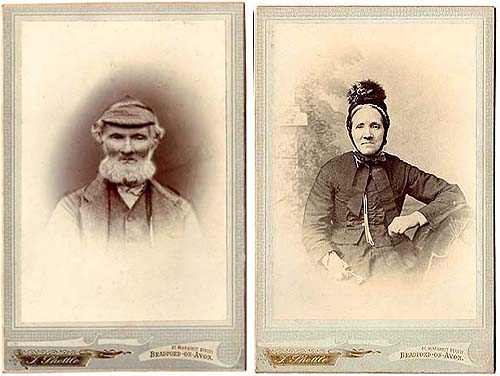Rialto
Restaurant, 9-10 St. Margarets Street
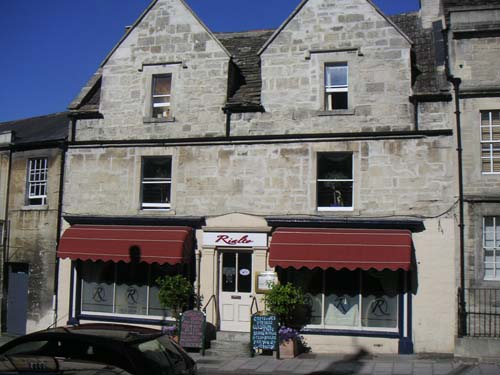
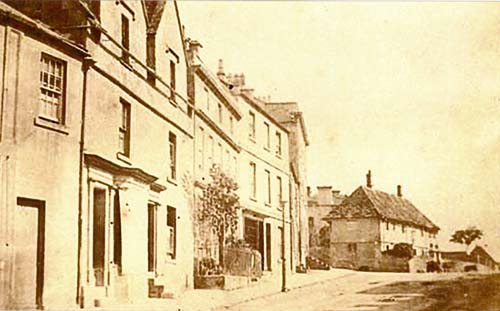
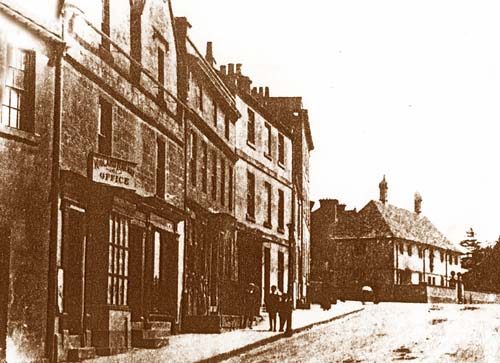
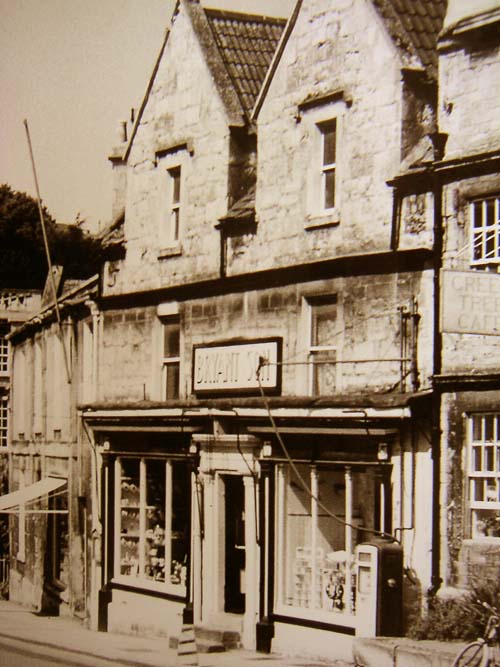
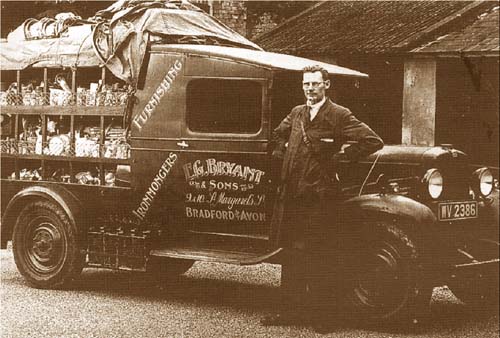

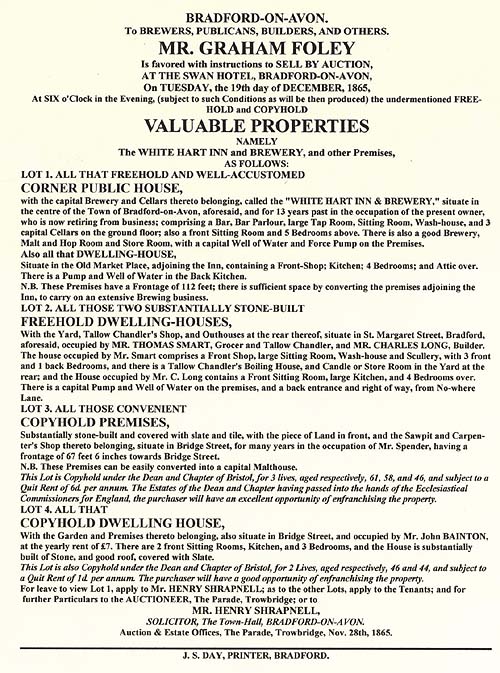
With the Yard, Tallow Chandler's Shop, and Outhouses at the rear thereof, situate in St. Margaret Street, Bradford, aforesaid, occupied by MR. THOMAS SMART, Grocer and Tallow Chandler, and MR. CHARLES LONG, Builder. The house occupied by Mr. Smart comprises a Front Shop, large Sitting Room, Wash-house and Scullery, with 3 front and 1 back Bedrooms, and there is a Tallow Chandler's Boiling House, and Candle or Store Room in the Yard at the rear; and the House occupied by Mr. C. Long contains a Front Sitting Room, large Kitchen, and 4 Bedrooms over.
There is a capital Pump and Well of Water on the premises, and a back entrance and right of way, from No-where Lane.
James Warren (died 1789) is shown as the owner of the French Horn with Richard Sheppard as his tenant. It is this Richard Shepard who is living in the house (tithe No.488) at the bottom of Nowhere Lane.
Rialto
Restaurant: Samuel Provis probably from Warminster owned it when it was the French
Horn
The houses formerly Bryant's Hardware Shop were identified in 1808 as
being the French Horn Inn owned by the Provis family (of Warminster). John Provis
was shown as the owner in 1808, and Joseph Provis the tenant with a small part
of it lived in by John Bull. Joseph Provis was also renting the cellar under no
8., probably as a narrow alleyway between the two buildings, now part of the entrance
to the shop called Bindings. One would assume that the house formerly Bryant's
did not have a cellar or if it did it was too small for the purpose of storing
beer, etc.
In 1836/7
John Long (Late James Long) is shown paying 2-3d rates on the property.James Long
was a Coal Dealer, and he died in 1836. Charles Long was the Executor for his
father, but he became bankrupt and eventually that property was sold to William
Long, Mason. He was a member from 1826 of the Independent Chapel (now United Church).
William Long erected the first School room at the Chapel in 1835 and it was enlarged
to its existing size in 1850. He had married Michal Derreett in 1820 at Westwood
and their eldest son, James eventually built the Town Hall in 1854 with another
Builder.

Poor
Rates 1784-7
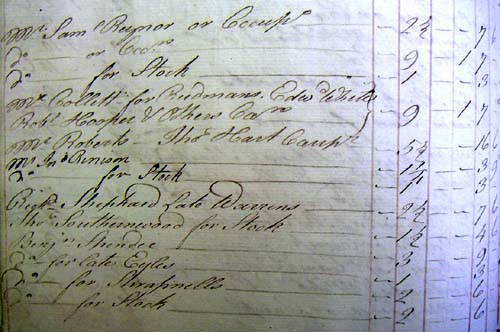
Poor
Rates 1789

Poor
Rates 1808
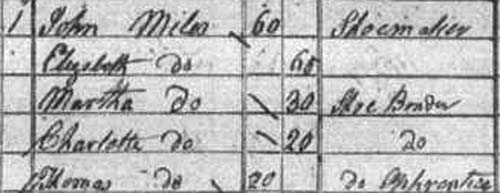
In
1841 John Miles and his family are living at the property
Site
and history from a Report by P.M.Slocombe for Wiltshire Buildings Record. in the
year 2000
The site
is on the side of a fairly steep small hill on the south side of the ancient ford
of the river Avon and is thought to have been developed since the Saxon period.
The plot, which faces slightly S of W (but taken as W in this report) therefore
rises to the rear and narrows. At the top it joins the end of a lane running S.E.
-
The house was first visited during the last few days of Mr Clive Bryant's
ownership. He ran an ironmonger's shop in the premises and there has been no domestic
accommodation there for some while. According to Mr Bryant the earliest main deed
dates from 1701 though there is another earlier deed which he could not read.
He believes the building was the Plume of Feathers Inn in the 18th century and
at a later stage four shops. An early photographer's studio at Bradford was on
the attic floor at the N. end of the rear range.
The site is probably plot
454 on the Bradford Tithe Map of 1841, house owned and occupied by Dinah Long.
It is not shown as double pile and has no rear wing. The OS 1 : 500 scale map
of 1887 shows the house as double pile with an open leanto at the rear, the N.
wing in existence and a separate building in the back garden.
The photographer
once at the house was perhaps Frederick Shettle who operated from 5 Trowbridge
Road in 1898-9 and St Margaret Street in 1903 as the Fine Art Photo Co. After
him H. and G. Morse were definitely at 9 and 10 St Margaret Street in 1911 and
Walter G. Collins and Miss Agnes Collins were at 10 St Margaret Street in the
period 1915-23.
Interpretation
This is an old site in the town which may
have been redeveloped several times. The wall of 26"thickness at the rear
of the front rooms indicates that it may have been a single pile stone house
in
about 1600. At that time the main living room was the S room with its inglenook
fireplace and the N room was probably an unheated parlour.
Considerable alterations
took place in about 1700. The roof was probably raised and the gable dormers front
and back were accommodated by extended collar trusses. At some point later in
the 18th century the parallel rear range was added and the S front room was changed
from a kitchen to a parlour. The rear wall of this range has a thickness typical
of the 18th century. At this time there may have been doorways connecting the
house with the next house to the S.
Further alterations including the insertion
of the good quality staircase were made in the mid 19th century. A rear wing behind
in ashlar stone was added and a wash-house leanto and garden building. The S shop
window is of 19th century type.
The timber-framing visible in the rear attic
is interesting as so little framing survives in the town but it may be part of
the next door building.
